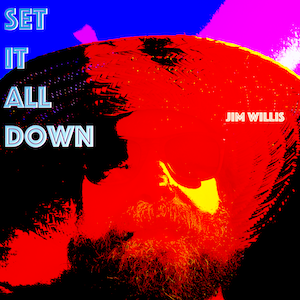Let’s start by agreeing that there is so much great music out there—old and new—that it’s not possible to listen to all of it. Today, discovering new music now can feel like drinking from an algorithm-fueled firehose, but I can remember before the internet came around where all we had were music magazines, really good DJs (I was so lucky to grow up with WHTG) and our friend’s older siblings to help us discover new music.

Fast forward to the algorithms. For several years, I was drinking through Spotify’s Discovery playlist. It seemed to have an uncanny ability to surface new artists that interested me. My music library exploded, though I admittedly purchased very few new albums (CDs or downloads) as a result of those discoveries. In hindsight, I don’t feel much of a connection to many of the new artists I learned of through Spotify’s Discovery feature.
In recent years, I’ve been relying on several non-algorithmic sources for new music. Here are a few of the ways I’ve been finding new stuff to listen to, post-algorithm. Some of these are pretty genre-specific so they may not be generalizable.
Live Shows

The stage shows and program guides of the several bluegrass festivals I attended every year. A large part of the new music in my library that I’ve purchased is there because I’ve seen the artists first hand and experienced varying degrees of having my mind blown. The connection I feel to these artists is pretty damn strong, mostly because bluegrass festival performances can be really intimate and the artists are so approachable. Some examples here would be: Molly Tuttle, Bryan Sutton and, most recently AJ Lee & Blue Summit (w/ Molly’s brother on guitar).
This is admittedly a bit old school, but after festivals, another rich source of new listening for me has been No Depression magazine. Margo Price would be a good example of someone I might not have been aware of were it not for No Depression.
Radio
I’m lucky to have a good public radio station (WBJB) local to me with some excellent DJs. I also use an app called Triode to listen to a few radio stations online: WFMU, WAMU’s bluegrass station and The Current from Minnesota Public Radio have all turned me on to interesting new artists. (Also, The Bakersfield Beat channel on SiriusXM can be pure gold when it comes to surfacing older country artists not on my radar.) There’s something to be said about the idea of radio’s “heavy rotation.” The music I discovered through the algorithms was almost always appealing on the first listen. Some cuts though, they require that a DJ force down your ears a few times before you realize, oh, this is killer. I get it. Those multiple listens make me feel a bit more connected than the dopamine-targeted algorithm.
LastFM
This is probably the closest I come to using an algorithm to find new music. I have an iOS shortcut that makes me a playlist of songs that my two “closest” LastFM neighbors have had in heavy rotation in their listening. This feels a little algorithmic but the fact that my LastFM neighbors are hopefully picking these songs themselves, then, well that’s pretty good with me.
Other musicians

In addition to all of the above, I’m fortunate to have a rich circle of other musicians that I play with on a regular basis. We are always turning each other on to new stuff. I don’t think I would be nearly as deep in to the Stanley Brothers if it weren’t for a couple of mandolin players I’m lucky enough to play with.
This is not to say I don’t use technology to help here. In addition to Triode (though one could just use a web browser to stream), two other applications factor heavily in to my discovery:
- Marvis. This app just provides an overlay to my Apple Music library but allows me to view artists, albums and songs in a way that’s almost impossible with Apple Music alone. When I open Marvis, it always presents me with a live Grateful Dead show that I either haven’t listened to or haven’t listened to in a long time. Then it surfaces albums and artists that I’ve been ignoring, etc. The whole “repeated listening/heavy rotation” is facilitated by Marvis. If you’re on iOS, buy the app, visit the Marvis subreddit and enjoy your library in a whole new way.
- Music Harbor. This sleeper app also factors heavily in to my listening. The app combs your library and your last.fm history for artists you listen to and then tracks new releases. This sounds trivial, but between how granularly the app can be configured and how easy it is to add new releases to a playlist (e.g New Releases to Check Out) this has been a great resource for me.
How I’m listening.
All that being said, over the past year I’ve started self-hosting a Lossless music streaming server called Navidrome that allows me to AirPlay my library throughout the house. This has totally changed how I’m listening to my library. I’ve been re-ripping any CDs that I had not originally ripped in a Lossless format, making sure my cover art is good, etc. I have about 100 of my most-listened to CDs in my Navidrome library. This music feels like my music in a way that the music in my Apple Library just doesn’t. The covers are all familiar to me—they’re the covers of the CDs that have followed me from city to city, apartments to home, etc.
Finally, I have a large collection of Hunter’s Trix Matrix recordings (this is some nerdy deadhead stuff, so if you don’t know, don’t worry!) on the Navidrome server. Being able to stream FLAC on my home network was the initial reason why I started running Navidrome to begin with. Over the past year, I have been honing a Python script to help me manage downloading, applying metadata and covers, etc. to the matrix recordings. It’s difficult to not become obsessive about live Dead shows so I make sure to keep the shows I have in some kind of rotation before downloading more shows.
So that’s the current state of discovery and listening as we get ready to turn the corner into 2024. I love this stuff would love to hear from other folks about how they’re doing the same.



